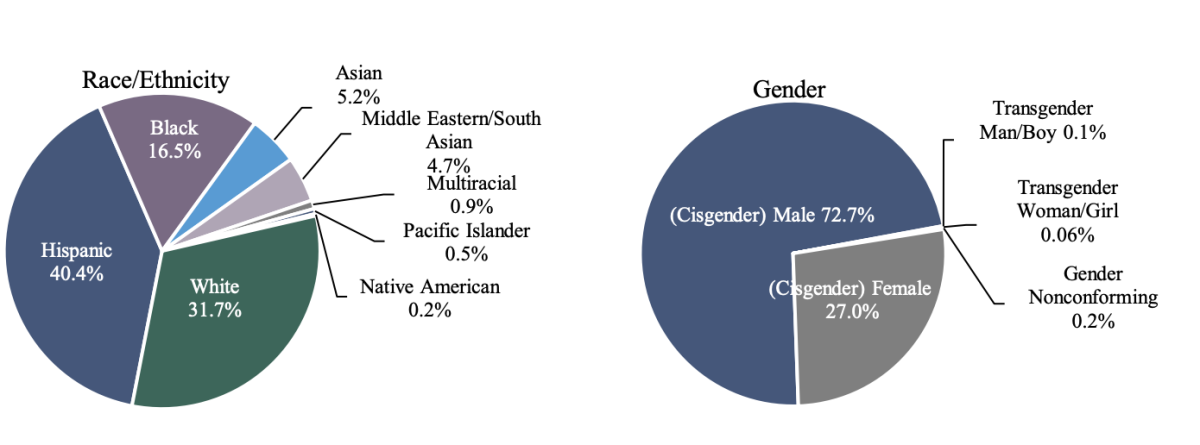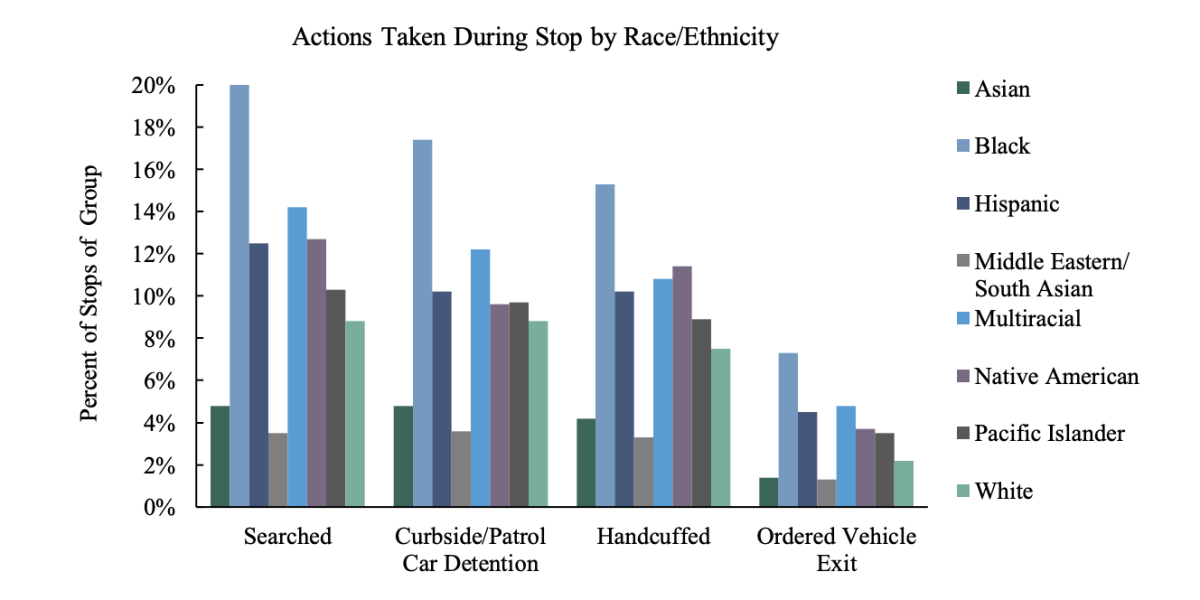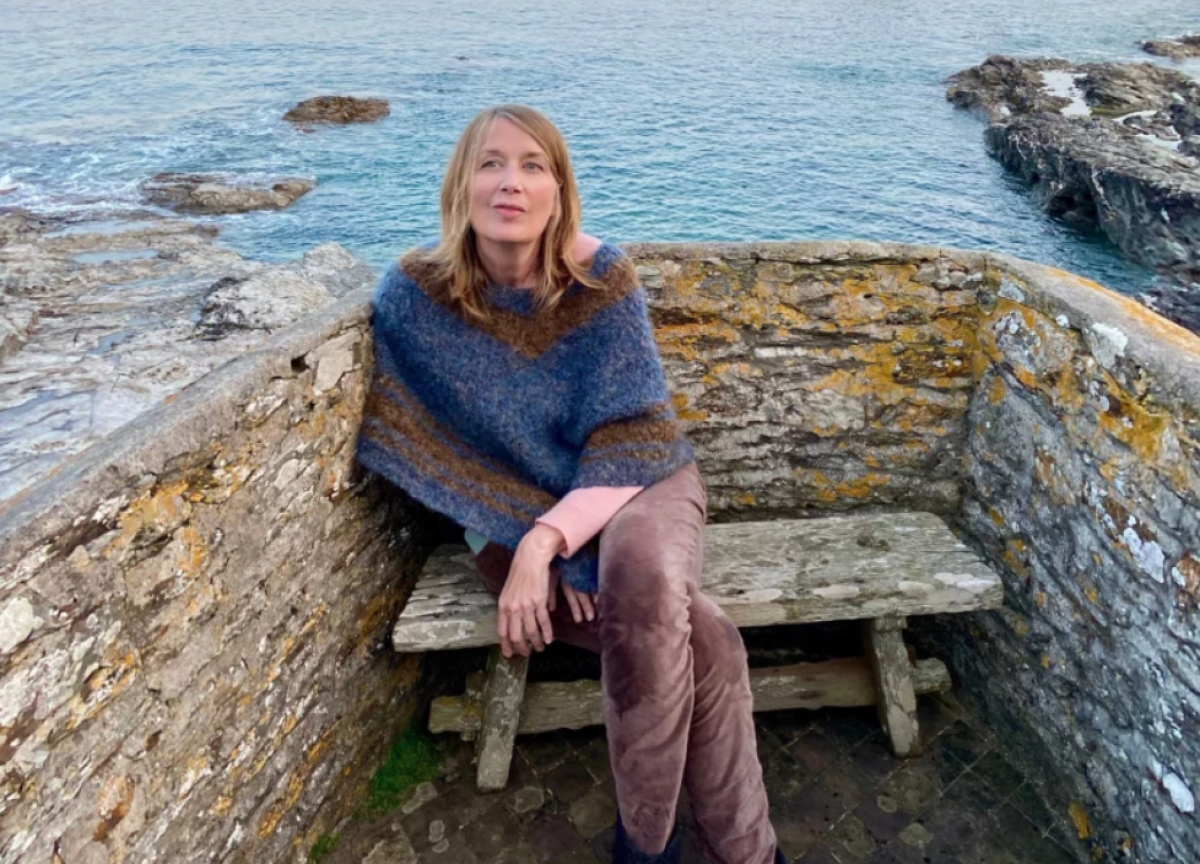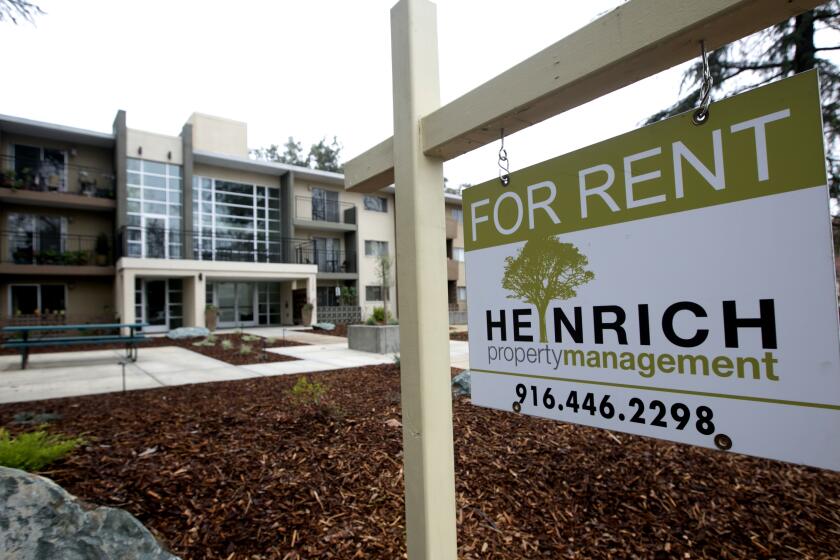New report reveals who gets stopped by the police in California

Good morning, and welcome to the Essential California newsletter. It’s Wednesday, Jan. 12. I’m Justin Ray.
In Oct. 2015, then California Gov. Jerry Brown signed AB 953, a law that requires police to collect data on the people they stop, including perceived race and ethnicity, the reason for the encounter, and the outcome.
The legislation was a response to “the deaths of unarmed black men and other people of color by police,” the bill’s author, Assemblywoman Shirley N. Weber (D-San Diego), said at the time. Those incidents “have forced us to confront some ugly truths about the persistence of racial bias in law enforcement.”
When it passed, law enforcement was not a fan of the bill.
“It’s a terrible piece of legislation,” Lt. Steve James, president of the Long Beach Police Officers Assn. and the national trustee for the California Fraternal Order of Police, said at the time. “There is criminal profiling that exists.”
Earlier this month, we saw the latest annual 2020 report of traffic and pedestrian stops. It contains data from 18 law enforcement agencies, including the 15 largest law enforcement agencies in California, from Jan. 1, 2020, to Dec. 31, 2020.
What do the numbers show? Let’s dig in:
Main highlights from the report
- The agencies that provided data made more than 2.9 million stops, with the California Highway Patrol conducting the most (57.7%). Despite three more agencies contributing data in 2020, there were actually 26.5% fewer stops reported than in 2019.
- The most common reason reported for conducting a stop across all racial/ethnic groups was a traffic violation (86.1%), followed by what the report described as a “reasonable suspicion” that the person was engaged in criminal activity (11.5%). A higher percentage of Black people were stopped for reasonable suspicion than any other racial identity group.
- People perceived to be Latino (40.4%), white (31.7%), or Black (16.5%) made up the vast majority of stopped individuals. The graph below shows a breakdown of these stops.

- “Officers searched, detained on the curb or in a patrol car, handcuffed, and removed from vehicles more individuals perceived as Black than individuals perceived as white, even though they stopped more than double the number of individuals perceived as white than individuals perceived as Black,” the report states.

- The report also found that people perceived to be transgender women were 2.5 times more likely to be searched than women who appeared to be cisgender (note: the data is based on how officers perceive people, not how they identify themselves. As the report states, “Individuals may self-identify differently than how an officer may perceive them. This distinction is critical because racial and identity profiling occurs because of how people perceive others and act based on that perception rather than how individuals see themselves”).
- “Stopped individuals perceived to be transgender women/girls had the highest proportion of their stops involve the officer taking actions towards them (61.7%), and individuals perceived to be transgender men/boys also had actions taken toward them during more than half of their stops (60%),” the report states.
- Officers perceived 1.2% of the people they stopped to have one or more disabilities. The most common disability reported was mental health disability (70.3%). Officers searched individuals perceived to have a mental health disability 4.8 times more often. Officers were 5.2 times more likely to use force against people with perceived mental health disabilities than those without.
Again, here is a link to the full report.
Related reading:
— Scientists who analyzed the body-camera footage from more than 100 police officers have found a subtle but clear pattern: During traffic stops, officers spoke to Black men in a less respectful and less friendly tone than they did to white men.
— This past November, The Times reported that 7 of every 10 bike stops by L.A. sheriff’s deputies involve Latino cyclists. “You feel powerless,” said Ubaldo Delacruz, a Boyle Heights resident who has been stopped several times in East L.A.
And now, here’s what’s happening across California:
Note: Some of the sites we link to may limit the number of stories you can access without subscribing.
L.A. STORIES
‘It’s very painful to see someone lose their life at such a young age.’ An emotional public viewing was held for Valentina Orellana Peralta, the 14-year-old who was killed by a Los Angeles police officer while shopping with her mother. It was held at Angelus Funeral Home in Crenshaw. “I’m starting to understand,” her mother said, “that my daughter was an angel whose mission was to bring peace and love.” Los Angeles Times
“The pain and rage over the 14-year-old girl killed by the LAPD? To them, it’s ‘like deja vu’”: Among the attendees at the funeral for Valentina Orellana Peralta were relatives of others killed by police. It’s the club to which no one wants to belong. Los Angeles Times

Our daily news podcast
If you’re a fan of this newsletter, you’ll love our daily podcast “The Times,” hosted every weekday by columnist Gustavo Arellano, along with reporters from across our newsroom. Go beyond the headlines. Download and listen on our App, subscribe on Apple Podcasts and follow on Spotify.
POLITICS AND GOVERNMENT
‘If state leaders want affordable housing, they have to stop bungling attempts to fund it’: The Times editorial board says that one of the biggest disappointments of last year’s legislative session was the failure to pass Senate Bill 679. The ambitious bill would have set up the Los Angeles County Affordable Housing Solutions Agency to build new housing, preserve existing affordable housing and offer renters services. While the Legislature did pass bills to address housing supply, the failure to pass 679 “was a loss for L.A. County, which needs hundreds of thousands of affordable homes to prevent even more people from becoming homeless.” Los Angeles Times
CRIME, COURTS AND POLICING
Officials are investigating the death of inmates at two California prisons. The first slaying involves an inmate at California State Prison, Sacramento. Deandre A. Lewis, 37, was found unresponsive there and later pronounced dead. The second death occurred at High Desert State Prison in Susanville, where inmate Benjy S. Wade was found unresponsive in his cell. The 40-year-old was also later pronounced dead. In both cases, their cellmates are suspects in the slayings. Sacramento Bee
An off-duty Los Angeles police officer was shot and killed during an armed robbery attempt Monday night in an unincorporated area of South L.A., authorities said. LAPD Chief Michel Moore said the officer, Fernando Arroyos, had just worked a series of days on patrol and had a day off on Monday, when he joined his girlfriend “on a hunt for a house, a place to live, a place to buy and invest in the city and in the future of this region.” Los Angeles Times
‘Aw screw it’: A California appeals court has upheld the firing of two Los Angeles police officers who were caught playing Pokémon Go instead of responding to a robbery at the Crenshaw Mall in 2017, court records show. Los Angeles Times

Support our journalism
HEALTH AND THE ENVIRONMENT
Endangered coho salmon are spawning in narrow Marin County creeks where they haven’t been seen for years. Those heavy winter rains the state has seen in recent weeks have made it possible for them to jump into culverts and bypass roads to get deeper into their historic habitat. “The coho salmon were recently spotted spawning in San Geronimo Valley’s Montezuma Creek — for the first time since 2004 — and Larsen Creek — for the first time since 2006 — according to biologists at Salmon Protection and Watershed Network, a program of the nonprofit Turtle Island Restoration Network,” Tara Duggan writes. San Francisco Chronicle
Heads up! Omicron can make you contagious before you test positive, allowing for rapid spread. In general, tests are able to reveal an Omicron infection, but enough virus needs to have reproduced and appear at sufficiently high levels in the nose or saliva to be detectable, according to Dr. Michael Mina, an epidemiologist. “Omicron does appear to be more infectious, so it might be taking off and actually spreading the first day or two before there’s enough virus in your nose to turn the [rapid] antigen test positive — or the PCR test positive, for that matter.” Los Angeles Times
CALIFORNIA CULTURE
Kari Howard, a longtime Los Angeles Times editor who championed ambitious narrative journalism and helped edit the 2015 Pulitzer Prize-winning series on California’s drought, died Monday of cancer. She was 59. Howard, a lover of music and writing who frequently quoted favorite songs and story sentences, worked as assistant foreign editor before becoming editor of Column One, the newspaper’s front-page narrative showcase. “She exuded a love of language and had an incredible ability to help writers tell the stories they wanted to tell,” Times managing editor Scott Kraft said. Los Angeles Times

Free online games
Get our free daily crossword puzzle, sudoku, word search and arcade games in our new game center at latimes.com/games.
CALIFORNIA ALMANAC
Los Angeles: 77 San Diego: 73 San Francisco: Overcast, 62 San Jose: Overcast, 68 Fresno: Overcast, 64 Sacramento: Overcast, 61
For the record: Yesterday’s article stated that a note obtained by producers of “The Jinx” came from Robert Durst’s adopted son. The note actually came from Susan Berman’s adopted son.
AND FINALLY
Today’s California memory is from Richard Carroll:
I was in the Air Force and in 1955 had the opportunity, along with two airmen friends, to fly in a bumpy and chilling cold Douglas C-124 cargo plane to the Van Nuys Airport. We had never experienced the ocean and a cabby dropped us off at a beach just south of Santa Monica. The first glimpse was beyond stunning. The water was a deep blue ruffled by an offshore breeze, puffy white clouds on the horizon, and small birds at water’s edge dodging the rhythm of the waves. In our undershorts we also pathetically attempted to body surf. Whenever I drive past that beach the memories remain vivid.
If you have a memory or story about the Golden State, share it with us. (Please keep your story to 100 words.)
Please let us know what we can do to make this newsletter more useful to you. Send comments to essentialcalifornia@latimes.com.
Start your day right
Sign up for Essential California for news, features and recommendations from the L.A. Times and beyond in your inbox six days a week.
You may occasionally receive promotional content from the Los Angeles Times.




